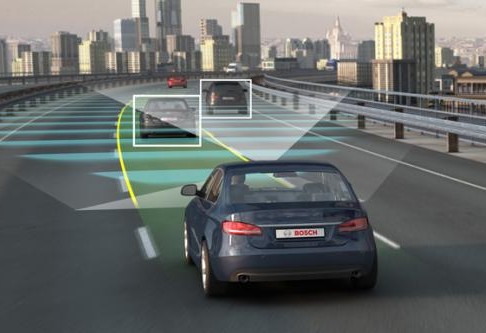Regimenham predicts that the sensors in driverless cars can prevent them from happening before they are discovered-before they happen, and even plan to repair the car.
Google CEO Sergey Brin said last year that "ordinary people" will be able to use driverless cars in the next five years. Last fall, the California government passed a law that allowed driverless cars to be driven on the road. GM plans to launch a semi-autonomous Cadillac car in 2015.
Regime Nam said, "The number of cars in the world exceeds 1 billion. After the popularity of Google's driverless cars, the amount of data generated will be unimaginable. Google is not the only company developing driverless cars. "Thilo Koslowski, an analyst at market research firm Gartner, said," By 2020, there will be several driverless cars at reasonable prices in the market. "
Regimenham predicts that all car companies may be developing driverless cars. Dutch mobile phone camera manufacturer Mobileye has raised US $ 400 million.

Rigi Mennham published a blog post this week, saying, “Google ’s driverless cars generate a lot of data. It uses these data to determine the direction and speed of travel. It can even judge that someone may be suddenly based on the new cigarette butts detected on the road. Show up '. "
Regimenham said that if a driverless car generates 1GB of data per second, the amount of data generated each year will reach about 2PB (terabytes). He came to this conclusion based on each car traveling 600 hours (2.16 million seconds) per year.
Koslovsky disagrees that every driverless car can generate 1GB of data per second. Although there will be a lot of data transmission between the internal components of driverless cars, these data will not be stored, so these data are only used by the car itself, "Some high-end cars may generate 1GB of data per hour that users may need to analyze, but 1 second of data will not be generated in 1 second. " Compared with the current technology, the amount of data generated by driverless cars will be much larger, which is beyond doubt.
Koslowski said that in the future, cars will be equipped with more infrared sensors, cameras and lidars to detect objects around them. Cars can even communicate with each other, "know" the speed of nearby cars, and react in time when nearby cars suddenly turn or brake. Using computer algorithms and prediction models, cars can even predict whether a car is driving nearby, or even the driving level of other drivers, to prevent injuries.
Koslovsky even predicted that the data generated by the car in the future will be uploaded to the cloud storage system, and the government can use this data to improve driving safety.
Cars equipped with a large number of sensors will be able to detect faults in real time and take measures in advance. For example, the car will promptly notify the driver of possible hidden dangers to prevent a larger failure. Without driver intervention, the car can make an appointment with the repair shop for maintenance.
Reginalnham pointed out that in the future, the data collected by cars "will help auto companies find areas for improvement. The time it takes for new models to go on sale will also be greatly reduced."
Base site lead-acid battery protector system is the smart resonance pulse technique for 6V/36V cell battery or 6V/36V battery pack in series with 3PCS 2V/12V cells. It is working as a new generation of high-tech products for daily battery maintenance in telecom base site or electrical power system.
It utilizes the energy from battery self-power or floating power supply, to produce a unique smart electronic pulse, then feed back to the battery through the output line, Resonance with coarse and hard lead sulfated crystals in negative plates of batteries and converted to active substance under the reaction of pulse charging current which dissolve lead sulfated crystals, Keeping the battery working at a high efficiency. Under the disturbance by the smart resonance pulse, the new lead sulfate crystal is prevented from being formed, and the service lifespan of the lead-acid battery is prolonged 1~2 times than before.
There will be individual differences in State-Of-Capacity (SOC) and internal resistance (IR Value) of batteries after used for a certain number of years. It is called the battery unbalancing. Due to the total floating charge voltage of the rectifier remains unchanged and keeps constant, when the battery pack is in floating charging status, the floating voltage of the cells with larger internal resistance will be higher than that of the normal battery, resulting in the normal battery's floating voltage is lower. Batteries floating charged in this unbalancing way for a long time will cause the higher voltage cells seriously water dehydrated, and the lower voltage cell is in a state of under charged. This way of vicious spiral formed will accelerate the base site batteries premature failure.
Our protector system set a equalized charging function. If the terminal floating voltage of the battery system is higher than the standard value of protector system designed, the system automatically and smartly switches to the over-voltage balanced working state. When the voltage drops lower than standard value, it automatically changes to smart pulse maintaining state. The decrease of battery internal resistance and the improvement of the battery equalization lead to the battery lifespan prolonged.
Base Site Battery Protector System
Base Site Battery Protector System,Stationary Battery Protector System,Online Battery Smart Protector System,Telecom Base Site Battery Protect System
Shenzhen Daceen Technology Co., Ltd. , https://www.daceen-sz.com